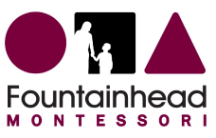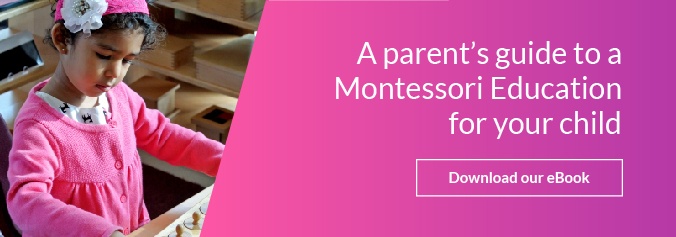The Montessori Method consists of a number of core beliefs about how children learn and how the classroom should be designed. The founder of the Montessori Method, Maria Montessori, wrote several books on her observations, experiences, and beliefs about how children should be educated. The robust library of information available about the Montessori Method can provide you with an extensive amount of information about the why and how behind the Montessori philosophy of education. If you are just getting started in your research into Montessori, you can read about three of the core tenets of the Montessori Method below.
Children are naturally smart
The development of the Montessori Method began when Maria Montessori had the opportunity to work with a group of children that were considered unteachable. They did not succeed in the traditional classroom setting, and because of that it was believed that they could not learn like other children. Montessori had great success working with them by taking the stance that children are naturally smart and will learn when given opportunities to follow their natural curiosities. The belief that children are naturally smart became a core tenet of the Montessori Method.
In Montessori education, students are allowed and encouraged to explore topics that interest them. They can dig deep into a topic of interest in the classroom. The Montessori classroom is designed to encourage exploration and provide students an opportunity to focus deeply on their work. This tenet of the Montessori Method also helps students to develop into life-long learners. They have a say in what and how they learn, which helps them develop a sense of responsibility for their learning. When students develop a sense of responsibility for their education it helps them develop into adults that want to continue learning throughout life.
School should prepare children for success in life
The overarching goal of the Montessori Method is to prepare students for success in life. Maria Montessori believed that education should be a ‘help to life’ and focus on more than ensuring that the children learn to be good students. The work in the Montessori classroom is not done simply for the sake of doing work. Every aspect of the classroom is designed with the purpose of guiding students toward developing characteristics that will help them become successful in life. Students in the Montessori classroom learn to be independent, self-directed, disciplined, and to collaborate with others. They are also challenged and expected to find solutions to the problems they encounter instead of being given the answer. This tenet of the Montessori Method helps students thrive in school and prepare for future success outside of the classroom.
Collaboration with others is an essential part of learning
In the Montessori Method, independence and self-directed learning are both considered essential for success in life. Also, helping students develop the ability to collaborate with others is a core tenet of Montessori education. In almost all aspects of life students will need the ability to interact and work with others. Maria Montessori recognized the importance of collaboration and designed the classroom to encourage it between students. The Montessori classroom is mixed age, which provides the opportunity for younger students to learn from their older classmates and for the older students to learn through teaching. This design allows for interactions and occasions for learning that students do not generally find in a traditional classroom setting.
The explanations above are condensed and barely scratch the surface of the in-depth information that is available about the Montessori Method. If you are ready to learn more, there is a list of resources available in the parent library on the Fountainhead Montessori website.












Let us know what you think about this post
Put your Comment Below: